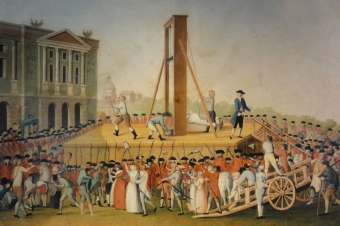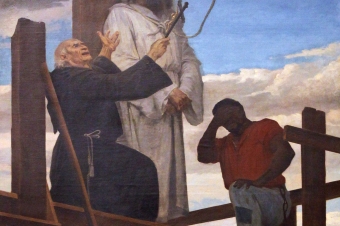Summary:
From the Carandiru movie and the support reading, the students were introduced to the prison rehabilitation theory and historical evaluation of Carandiru during the 20th Century. The activity also allows the students to have contact with the observation theory, which insert the observer to the observation, which assign a fundamental role to the identification of who observe and how he does.
Objective:
This activity has two main goals. The first one refers directly to the legal -penal and criminological fields, and is connected to the prison rehabilitation – specifically to these Brazilian prison institutions ideas and practices, between the first prison complex and the end of the 20th Century. It was selected two cinematography styles to mark both extremes. Black and white images from the new State Prison, recorded on 1928, mark its beginning. Without audio and explanatory subtitles, the video portrays the prison’s day-to-day – at the time that it was still the “the myth of a prison-model” (Salla 2006: 193). The end of this journey is portrayed by O prisioneiro da grade de ferro, a documentary produced from the images captured by the inmates’ right before the Carandiru Complex’s implosion – that results in a series of several expansions of the Carandiru Complex during the 20th Century. The second main goal is aimed at introducing the students to some notions of epistemology, especially to those related to the position or point of view of the observer and to the limit of our own observations (blind spots). The interest here is to confront the students with the analytical failure of the dichotomy between the “inside view” and the “outside view” – or the “the inside point of view” or an “external point of view”. Frequently, the “inside” and “outside” keys are used, even in the movie field, which is used to observe the prison institution. However, this analytical key, besides operating in a reductionist manner, also condones and reinforces the barriers that are created between the prison institutions and societies which create both in the urban management plan, the law political relationships and exercises, and in the language plan. Even in different ways, these two pedagogic goals try to integrate the Brazilian prison system to the law courses in a different manner, including a different thematic from the legislations, courts decisions and other documents (adapted from MACHADO, Maira Rocha. De dentro para fora e de fora para dentro: a prisão - no cinema - na sala de aula. Revista Sistema Penal & Violência. Vol. 6, n. 1, p. 103-116, 2014.)
Available at: http://revistaseletronicas.pucrs.br/ojs/index.php/sistemapenaleviolencia/article/view/15851/11625
Dynamics:
- TEACHING METHOD: movie projections, debate and individual written exercise.
- REQUIREMENTS: It was indicated to the students a previous obligated reading of the Chapter 2 (Paredes que se erguem) from the book Carandiru: a prisão, o psiquiatra e o preso, by Elizabeth Cancelli (Edited by UnB, 2005) and the brochure The problem of prisons from the 70’s (attachment I), as a complementary reading.
- DEVELOPMENT OF THE DYNAMICS: The professor exhibited a documentary from the 20’s in classroom, referring to the Carandiru development and in a moment that it was considered the great modernization of the Brazilian prison system. This is an institutional documentary showing inmates practicing sports, working and receiving literacy classes. It also shows both the physical space of the individual jails and the common spaces. Furthermore, the professor exhibited the movie O prisioneiro da grade de ferro by Paulo Sacramento, which was filmed right before the implosion of the Carandiru. This movie was produced in the prison’s workshop and was filmed by the inmates themselves. The documentary registers the prison’s initial ideas of rehabilitation, but also shows the difficulties of work retention, education, medical treatment, etc. in a prison overcrowding context. Using some parts of the movie, students were invited to indicate and explore the differences and similarities they could see on both cinematographic registers.
- END OF THE DYNAMICS: The professor asked questions to the class until five factors were discussed and identified – the scenario, the characterization of the inmates without free deprivation, the power relations within the prison space, the potential of the day-to-day life to make for the ideal rehabilitation and, finally, the type of register, the genre and the different forms of seeing the legitimacy of the exhibited contents.
When using this activity with students of the fourth cycle and Masters, before the debates, they were asked to draw up in writing a comparison between both movies. Also in this context, it was sought to privilege the activity’s epistemological dimension, instigating the students to explore the different strategies of knowledge production. Here, the debate about the difference between fiction and documentary assumed the central role. For this, see the text De dentro para fora e de fora para dentro: a prisão – at the theater – in the classroom, indicated in this activity’s goals.
- ATTENTION IN CLASS: As it happens when cinematography content is used, the rich elements brought to the classroom requires more from the professor and the class in the control of the time and also while paying attention to meeting the main activity’s goals.
Evaluation:
.
- GRADE EVALUATION: The activity, together with the others, composed part of the participation grade that is equivalent to 35% of the total grade. To the grade composition, it was accounted the students’ self-evaluation and the highlights during the classes. (Coherent participation in the texts and in the activity’s proposal).
When written exercises were used, the professor’s comments and evaluation attended to the understanding and adequacy of use of the observation theory tool.
Observation:
- It is possible to develop the activity in only two classes with the fourth cycle and Masters students with emphasis in epistemological questions.
- Various other questions can be themed from the activity’s mobilized material. From the last experiences, these were the main ones:
1. The issue of the overwhelming prisional population, that can demand the professor to prepare a panorama of the Brazilian prison problem and the effects of this overwhelming prisional population for the criminal justice system actuation, and the way the Brazilian society looks to inmates and the deprivation of freedom as an adequate penalty. To advance about this, it is recommended the UNODC’s manual about overwhelming prisional population, available at: https://www.unodc.org/documents/justice-and-prison-reform/Overcrowding_i... and the text MACHADO, Maira Rocha. A superpopulação prisional como obstáculo ao desenvolvimento sustentável (2012, p. 135-154) – book chapter http://bibliotecadigital.fgv.br/dspace/bitstream/handle/10438/10355/Inst...ção%20do%20Desenvolvimento%20Sustentável.pdf?sequence=1&isAllowed=y
2. The Carandiru massacre and the way that the national and international justice system institutions reacted to the episode 20 years later. To this, it is recommended the students use the materials, texts and available posts inside the platform: Memória Massacre Carandiru: passado presente de violência estatal em instituições prisionais (www.massacrecarandiru.org.br), as well as reading the book MACHADO, Maira e MACHADO, Marta. Carandiru (não) é coisa do passado: um balanço sobre os processos, as instituições e as narrativas 23 anos após o Massacre (São Paulo: Acadêmica Livre, 2015).






